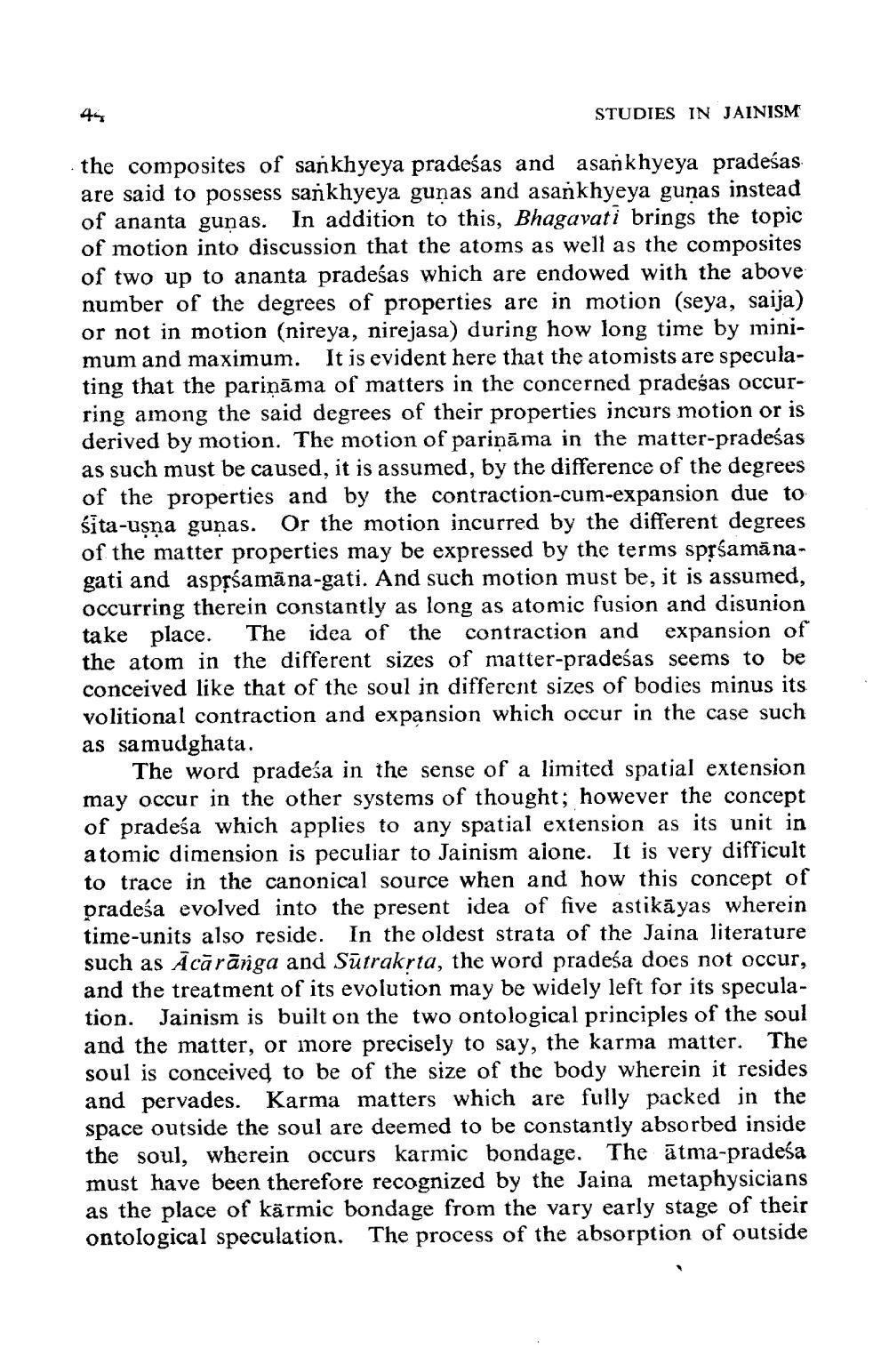________________
STUDIES IN JAINISM
the composites of sankhyeya pradeśas and asankhyeya pradeśas are said to possess sankhyeya gunas and asankhyeya gunas instead of ananta gunas. In addition to this, Bhagavati brings the topic of motion into discussion that the atoms as well as the composites of two up to ananta pradeśas which are endowed with the above number of the degrees of properties are in motion (seya, saija) or not in motion (nireya, nirejasa) during how long time by minimum and maximum. It is evident here that the atomists are speculating that the pariņāma of matters in the concerned pradeśas occurring among the said degrees of their properties incurs motion or is derived by motion. The motion of pariņāma in the matter-pradeśas as such must be caused, it is assumed, by the difference of the degrees of the properties and by the contraction-cum-expansion due to śita-usna gunas. Or the motion incurred by the different degrees of the matter properties may be expressed by the terms spršamānagati and aspşśamāna-gati. And such motion must be, it is assumed, occurring therein constantly as long as atomic fusion and disunion take place. The idea of the contraction and expansion of the atom in the different sizes of matter-pradeśas seems to be conceived like that of the soul in different sizes of bodies minus its volitional contraction and expansion which occur in the case such as samudghata.
The word pradeśa in the sense of a limited spatial extension may occur in the other systems of thought; however the concept of pradeśa which applies to any spatial extension as its unit in atomic dimension is peculiar to Jainism aione. It is very difficult to trace in the canonical source when and how this concept of pradeśa evolved into the present idea of five astikāyas wherein time-units also reside. In the oldest strata of the Jaina literature such as Ācārānga and Sūtrakrta, the word pradeśa does not occur, and the treatment of its evolution may be widely left for its speculation. Jainism is built on the two ontological principles of the soul and the matter, or more precisely to say, the karma matter. The soul is conceived to be of the size of the body wherein it resides and pervades. Karma matters which are fully packed in the space outside the soul are deemed to be constantly absorbed inside the soul, wherein occurs karmic bondage. The ātma-pradeśa must have been therefore recognized by the Jaina metaphysicians as the place of karmic bondage from the vary early stage of their ontological speculation. The process of the absorption of outside




